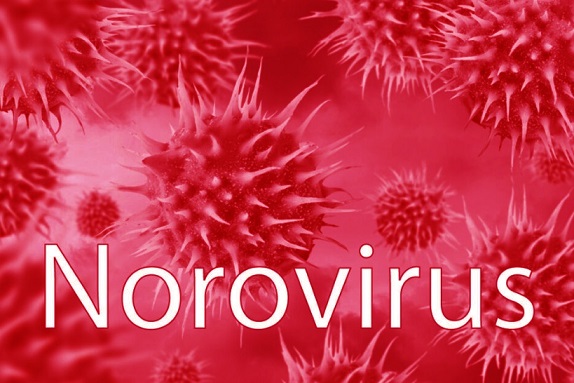Nikhil Prasad Fact checked by:Thailand Medical News Team Jan 09, 2025 3 months, 1 week, 6 days, 17 hours, 58 minutes ago
Medical News: In recent weeks, communities across the United States have reported a surge in cases of stomach illnesses, leaving many wondering what might be causing the sudden uptick. Health officials point to a new strain of norovirus, scientifically labeled GII.17, as a significant contributor to this nationwide outbreak. This virus, commonly referred to as the “stomach flu” (though it’s unrelated to influenza), is known for its highly contagious nature and unpleasant symptoms. With the emergence of GII.17, experts are racing to understand its potential impact on public health.
 New Strain of Norovirus Called GII.17 Behind Current Surge in the United States
The Dominance of GII.17
New Strain of Norovirus Called GII.17 Behind Current Surge in the United States
The Dominance of GII.17
According to the Centers for Disease Control and Prevention (CDC), this new strain now accounts for the majority of norovirus outbreaks nationwide. Data from CaliciNet, a network of public health laboratories that tracks norovirus, shows that nearly 70% of recent outbreaks have been linked to GII.17.
https://www.cdc.gov/norovirus/php/reporting/calicinet-data.html
This shift marks a departure from previous seasons dominated by another strain, GII.4, which has been the primary culprit behind norovirus cases in the United States since 2012.
“It is too early to tell if this strain is associated with more severe norovirus disease,” said Jan Vinjé, head of the CDC’s CaliciNet system. However, he suggested that the surge could be linked to lower population immunity against GII.17. This
Medical News report delves deeper into the science and implications of this emerging strain.
Nationwide Outbreaks and Cruise Ship Concerns
The rapid spread of GII.17 has been noted across the country, including within tightly controlled environments like cruise ships. Last month alone, the CDC documented six norovirus outbreaks on cruise vessels - the highest number reported in a single month in over a decade. These settings, where people live and dine in close quarters, provide ideal conditions for the virus to spread.
While cruise ships often capture headlines, norovirus outbreaks extend far beyond the high seas. Schools, restaurants, and nursing homes are among the common hotspots for the virus. Given norovirus’ ability to thrive in various environments, the current surge underscores the importance of rigorous hygiene practices nationwide.
Tracking the Spread
Norovirus is the leading cause of foodborne illness in the United States, and its prevalence tends to rise during the winter months. However, tracking the true scope of the outbreak can be challenging. Many cases resolve without medical intervention, leaving them unreported. Despite this, several indicators suggest that norovirus activity is currently at its peak.
Positive test rates from BioFire Diagnostics, a leading testing company, hav
e exceeded previous seasonal highs.
https://syndromictrends.com/
Similarly, data from WastewaterSCAN, a program monitoring virus levels in sewage, shows elevated concentrations of norovirus across almost all sites it tracks.
https://data.wastewaterscan.org/
These findings align with reports of high hospital visits for gastrointestinal symptoms, further emphasizing the widespread nature of the outbreak.
The Global Context of GII.17
While GII.17 is relatively new in the United States, it has been circulating globally for several years. Countries like Japan and China experienced significant waves of GII.17-related illnesses as far back as 2014. More recently, parts of Europe reported a “sudden rise” in cases caused by the strain. These international patterns provide valuable insights into what the U.S. might expect as GII.17 continues to spread.
Last season, the CDC noted an increase in GII.17 cases, but it remained a minority strain. This year, its rise to dominance suggests a shift in the norovirus landscape, potentially driven by changes in the virus itself or gaps in population immunity.
Are Symptoms Worse with GII.17?
One pressing question is whether GII.17 causes more severe illness than other strains. So far, the evidence remains inconclusive. Historically, norovirus symptoms have been consistent across strains, including nausea, vomiting, diarrhea, and stomach cramps. Most cases resolve within a few days without medical treatment. However, severe dehydration can pose risks, especially for young children, the elderly, and those with weakened immune systems.
Previous norovirus variants, like the GII.4 Sydney strain that emerged in 2012, initially sparked fears of heightened severity. Later studies revealed that the increase in outbreaks was likely due to natural seasonal variations rather than a direct result of the strain’s characteristics. Similarly, researchers caution against drawing conclusions about GII.17’s impact until more data becomes available.
There is insufficient surveillance to really make the case that this is causing an increase in the number of cases. There is a need for comprehensive studies to determine whether GII.17 is inherently more virulent.
Preventing Norovirus Spread
Regardless of the strain, the prevention strategies for norovirus remain the same. Handwashing with soap and water is the most effective method for reducing transmission, as alcohol-based sanitizers are less effective against the virus. Health officials also recommend disinfecting contaminated surfaces, cooking food thoroughly, and staying home when sick.
For those infected, staying hydrated is crucial to avoid complications from dehydration. Most people recover without complications, but individuals at higher risk should seek medical attention if symptoms persist or worsen.
Conclusion
The emergence of GII.17 has introduced a new dynamic to the ongoing fight against norovirus in the United States. While researchers work to understand the strain’s characteristics and potential risks, public health measures remain our best defense against this highly contagious virus. By prioritizing hygiene and staying informed, communities can help mitigate the impact of this outbreak.
For the latest Norovirus News, keep on logging to Thailand
Medical News.
Read Also:
https://www.thailandmedical.news/news/norovirus-gii-17-strain-causing-massive-outbreak-across-the-united-kingdom
https://www.thailandmedical.news/news/enteric-viruses-and-their-effects-on-human-health
https://www.thailandmedical.news/news/scientists-identify-ten-different-viruses-including-emerging-viruses-causing-gastroenteritis-in-children-during-and-after-the-covid-19-pandemic
